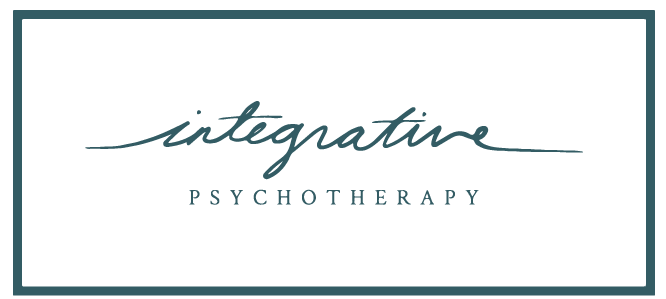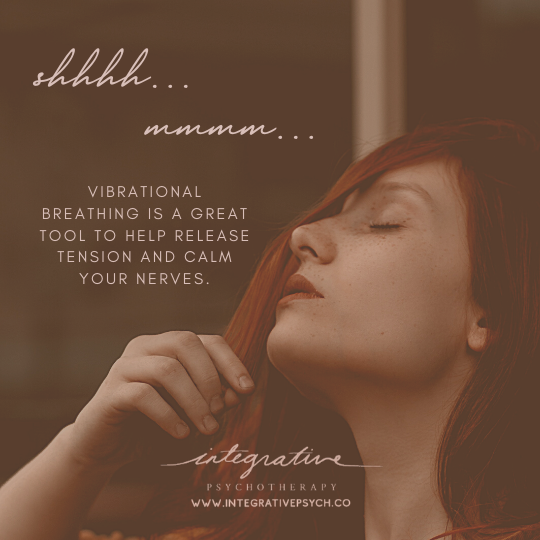6 Somatic Experience Exercises to Find Calm during Covid-19
You open your eyes, wake up and peer out the window, “thank goodness, the sun is shining!” you mumble to yourself.
Spring is here! And usually, this time of year is when we venture out, meet up with our social groups and sit out in the warm sun as we sip our frappuccinos. But these mornings, you may wake up and your body simply doesn't feel like itself. It’s almost like you want to shrug off this feeling but you can't put your finger on it.
When the body holds the key to calm.
What you may be feeling is a feeling of “stuckness”, of anxiety, or frustration or just feeling the unknown of the energy around us. Though we can’t control our environment and the world around us, we can help shift our body chemistry by engaging in some techniques to help settle uncomfortable feelings and find calm. Somatic experience is a therapy to help us connect to our bodies so we can help calm our minds and bodies. Below are some tips to help you develop somatic awareness and ways to working with your body. These exercises help increase our capacities for regulating our nervous system.
6 somatic exercises to help you find calm.
1} Notice
Take a moment to tune inward. Notice how comfortable or uncomfortable it feels inside of yourself. This is a step towards somatic awareness, where you connect with what it feels like to be in your skin. Notice your level of emotional and physical comfort. Just like when we give undivided attention to our partner, child or friend it provides a feeling of space and support, it is the same for your body. Slowing down and providing space to tune inwards helps regain a sense of connection to your mind and body and is a step towards calming your nervous system.
2} Contain
Notice any intense emotions, sensations, feelings and thoughts, and imagine drawing a circle around the intensity. You can take a paper and marker to do this exercise if visual aids help you make it more real. You don't need to change, adjust or lessen the intensity of the thing you notice, you simply are using your mind to draw a circle around whatever it is that’s weighing on you. If it’s a huge stressor, imagine a wide, thick circle. If it’s small, draw a small circle.
Next, imagine placing the object, item, emotion, discomfort or situation weighing on you mind, in a sturdy, strong container. Imagine putting the container in the hands of someone you trust, in a bank vault, on a shelf or locked cabinet in your therapists office, in your own home or on a another planet. This is called a “container exercise” where we put emotionally charged information into a container so we don’t hold it all alone. his gives your mind and psyche a perceived sense of distance from the upsetting emotion.
Emotional Containers help our minds get a break from emotionally charged information
You may notice a shift happen in your body as you visualize this. Your throat may feel less constricted, your belly may loosen and your forehead may soften. Just notice if there is any shift, and if there is, or if there isn’t, it is ok. Whatever it is, let it go. The containment exercise is especially helpful when we have emotional intense feelings specifically to the changes we are facing during coronavirus. Not being able to go to your yoga class, the uncertainty about when you kids are going back to school and not feeling like the world is offering something stabilizing to lean on can be hard when watching the news. By trying this somatic experience exercise you’ll help your body establish some sense of containment of the emotions in and around you.
3} Breathing with a twist with “shh” and “mmm”
Find a comfortable spot to sit or stand and focus on your breath. Take a deep inhale. When you exhale, use your mouth and breath out, making the sound “ shhhhhh” as if you’re telling someone to quiet down. Notice the area between your chest and your belly. This shh sound helps open the diaphragm and releases tension, panic or anxiety that can be trapped in our bodies. This helps move from a feeling of being stuck and frozen, to open and flexible.
Vibrational Breathing releases tension and leaves you feeling calm
Now, take another breath and on the exhale, make the sound “mmmm”. As you do this, make sure your lips are closed tight, so that the exhale is done with a vibration that you can sense in your throat and head. Do this a few times, and pay attention to the movement, sensations and vibration in your neck, throat and head. This helps stimulate the vagus nerve, which is connected to the parasympathetic nervous system. Doing this helps an overactive nervous system slowly relax and find calm again.
4} Ground with the Heel Drop
Find a spot on the ground to stand steady. Slowly stand up on your toes, and then rock onto your heels. Try this, back and forth a few times, getting into a rhythm. Now, stand high on your tippy toes, and then let yourself fall onto your heels with a loud thump. Let your weight drop onto yours heels. This helps feel connected to the ground beneath you and feel more connected to the here and now.
5} Love and Warmth
Recall a moment, a memory or even a hope for a time in the future that brings up feelings of love, of warmth and of feeling secure in your skin. It may even be a stranger doing an act of kindness, a hug you got from a friend or a professor noticing your hard work. It can be a hug or a look of love from someone who deeply cares for you. Imagination is a powerful tool that impacts the brain and body too. You can tap into a dream for this exercise if you can't come up with something in the here-and-now that resonates.
Or if your life feels especially painful or lonely now, think about a vision you have and the feeling of warmth you are working towards-do you envision having a warm family, a close friend to spend time with or a partner to hold and to be held. Even dreams, when life is hard, can bring up feels of warmth and fire the “feel good hormones” in your heart and brain.
6} Name it
Develop a dialogue with your body. Name what you notice. By simply naming the sensation, thought, feeling or urge you create a shifting , softening and settling so your body can find calm again. So, if you notice any tightness, softness, a temperature shift, an urge to move, a breath,a pressure or a calming, simply name the sensation as it comes up. Often the intensity shifts or may feel less uncomfortable when you contact it. This may not miraculously make your tension go away. However, when we learn to develop a dialogue with our bodies, and non-judgmentally notice the sensations we carry in our bodies, we begin to understand how our bodies respond to certain situations, relationships and realities. This is the first step to better knowing what our minds, bodies and psyche needs.
_ _ _
Somatic exercises are for “feel good” emotions and sensations too!
These tips aren’t only for stressful times, I invite you to try somatic exercises as well relaxed when you are in a happy, calm or joyous state so you can deepen the “feel good” feelings as well.
Now, if you’re reading this as you’re sipping your morning coffee, or as you’re gasping for air as you juggle the myriad responsibilities and uncertainties, I hope you find some relief in trying even one of these skills.
Remember, your body is here to communicate with you.
Listen in, and do your best to work at a pace that is right for you, based on your situation. And please, dear reader, be gentle with yourself and loosen some of the pressure if you’re needing some of that. This time will be a blimp in regard to the rest of your life. Is it still hard? Absolutely! Will it pass? Absolutely. Use your imagination if you need, to imagine a day in the future when this is gently tucked behind us {for more on imagination and skills for covid-19, read here}.
I’m sending worldwide warm wishes to all of you facing this reality.
And, just a note: if you try these exercises and there are some sensations that come up that are concerning or disturbing and you don't experience relief on your own, I invite you to reach out to a somatic anxiety or trauma therapist who can help you find relief. There are so many resources and therapists out there, and available, especially during covid-19.
If you are in New York, are are seeking counseling, we are here to help you.
At our practice, we offer integrative methods {such as EMDR, somatic therapy, expressive arts, parts work and talk therapy{} to help clients lessen the fear, panic and worry and re-learn what it feels like to feel comfortable in their skin again {or for some, learn what it means to feel secure for the very first time}.
If you are seeking that one-on-one tailored support, reach out.
Schedule your free 15 minute consult to see how we can map out a plan to your personalized healing today.
Now, to wrap up, I hope you do your best to tend to yourself with ease and love. I’m here in Long Island New York, sending you much strength, compassion and care your way.
Until next time,







